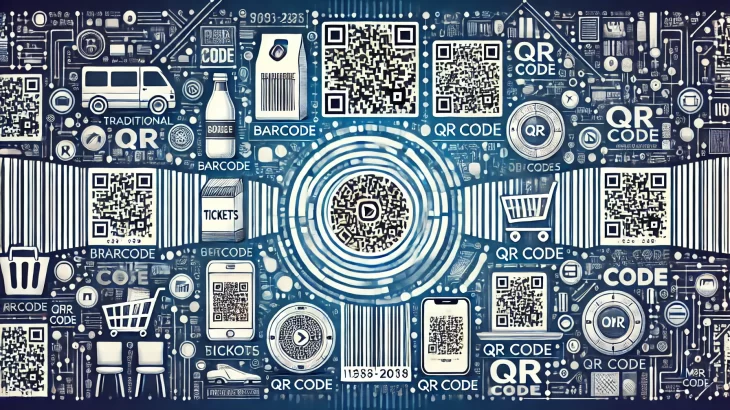Barcode and QR code Labels are everywhere in our daily lives. From grocery shopping to boarding a plane, these codes help businesses and individuals manage information quickly and efficiently. But how did these simple patterns of lines and squares become such an important part of modern life? Let’s explore the evolution of barcode and QR code labels, from their invention to their impact on industries worldwide.
What Are Barcodes and QR Codes?
Barcodes are a series of lines and spaces that represent data. They are scanned by machines to quickly retrieve information about a product or item. QR codes (short for Quick Response codes) are a more advanced type of barcode that can store much more data. They are made up of black and white squares arranged in a grid.
The Birth of Barcodes
Barcodes were invented in the 1940s by Norman Joseph Woodland and Bernard Silver. They created the first barcode to help grocery stores speed up checkout lines. Their original idea used a pattern of circles, but this was later simplified to the familiar vertical lines we see today. The first product to be scanned with a barcode was a pack of Wrigley’s gum in 1974.
How Barcodes Changed Industries
- Retail Revolution
Barcodes transformed the retail industry by making it easier to track inventory and speed up checkout times. Instead of manually entering prices, cashiers could scan products, reducing errors and saving time. - Healthcare Improvements
In hospitals, barcodes are used on patient wristbands and medications to ensure safety and accuracy. This reduces the risk of errors and helps medical staff provide better care. - Logistics and Supply Chain Management
Barcodes allow businesses to track items as they move through warehouses and shipping processes. This helps companies manage their inventory and ensure products reach the right destination.
The Arrival of QR Codes
QR codes were invented in 1994 by Masahiro Hara, an engineer at Denso Wave, a Japanese company. Unlike barcodes, QR codes can store more data and be scanned from any angle. This made them highly useful for industries like manufacturing and marketing.
Why QR Codes Became Popular
- More Data Storage
QR codes can store not just numbers, but also text, URLs, and other types of information. This makes them perfect for linking to websites, videos, and apps. - Fast Scanning
QR codes can be scanned quickly and easily, even from a distance or on curved surfaces. This speed makes them ideal for many applications. - Smartphone Compatibility
With the rise of smartphones, QR codes became even more popular. People could scan them using their phone cameras without needing special devices.
How QR Codes Are Used Today
- Marketing and Advertising
QR codes are used on posters, flyers, and product packaging to direct customers to websites, social media pages, or special promotions. They are an easy way for businesses to connect with their audience. - Event Tickets and Boarding Passes
Instead of printing paper tickets, many events and airlines use QR codes for entry. This is not only convenient but also reduces paper waste. - Contactless Payments
QR codes play a big role in mobile payment systems like Apple Pay, Google Pay, and PayPal. They make it easy for people to pay quickly and securely. - Healthcare and Vaccination Records
QR codes are now used to store health information, such as vaccination records. This makes it easier for people to access their data when needed.
Barcodes vs. QR Codes
While both barcodes and QR codes are useful, they serve different purposes.
- Barcodes are ideal for simple tasks, like identifying a product or tracking inventory.
- QR codes are better for more complex tasks, like sharing links or storing detailed information.
Many businesses use both types of codes depending on their needs.
Future of Barcodes and QR Codes
As technology evolves, so do barcodes and QR codes. Here are some trends to watch:
- Augmented Reality (AR)
QR codes may integrate with AR to provide interactive experiences. For example, scanning a QR code on a product might show a 3D image or video. - Security Enhancements
With the rise of digital fraud, QR codes are being designed with stronger encryption to ensure safety. - Smart Packaging
QR codes on packaging could offer more detailed product information, like sourcing details or recycling instructions.
Conclusion
The evolution of barcode and QR code labels has made them essential tools in today’s world. From their early days of simplifying grocery checkouts to their current role in marketing, healthcare, and payments, these codes continue to shape how we interact with products and information. As technology advances, barcodes and QR codes will only become more innovative and valuable.
